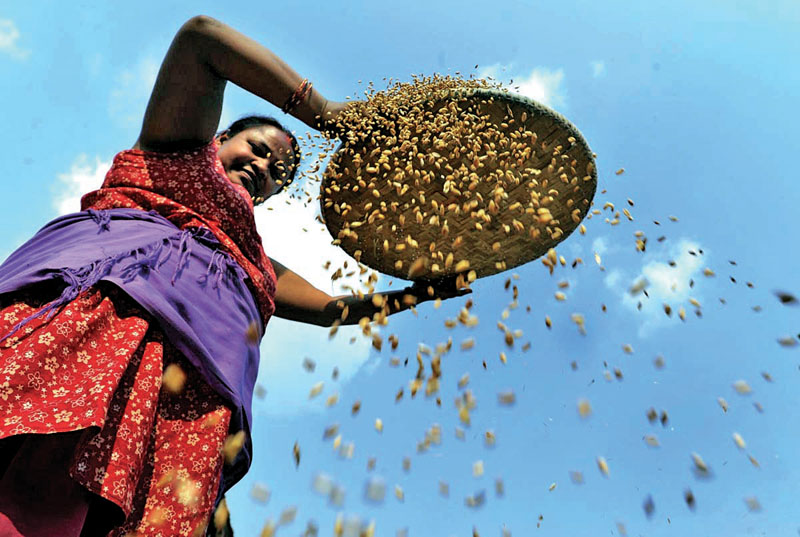Economy to grow by 4.6pc in current fiscal
Kathmandu, September 17
The country’s economic growth is projected to moderate at 4.6 per cent in this fiscal as agriculture output is expected to drop due to the recent floods and both export growth and remittance growth have been tapering along with the oil price shock in the Gulf countries.
Unveiling the ‘Nepal Development Update - 2017’, the World Bank Group has said that service sector growth will take a lead among agriculture, industrial and service sectors, which are the key sectors of the economy. As per the projection of the World Bank, service sector is expected to grow by 5.8 per cent, industrial sector by five per cent and agriculture sector by 2.7 per cent in the current fiscal as compared to 6.9 per cent growth in service sector, 10.9 per cent growth in industrial sector and 5.3 per cent growth in agricultural sector in the last fiscal 2016-17.
The country’s economy expanded by 6.9 per cent in the last fiscal as paddy production hit a record high, industrial output increased along with regular supply of electricity and the service sector saw rapid expansion. But most importantly the growth witnessed last year was due to the low base in fiscal 2015-16.
The World Bank has presented a bleak picture of the country’s economy as the agricultural sector will slow down due to the heavy loss caused by the recent floods. The industrial sector growth is also expected to slow down due to base effect, impact of the floods and slow implementation of electricity generation projects, which can contribute to industrial growth like Upper Tamakoshi Hydroelectric project, according to Sudyumna Dahal, economist at the World Bank and principal author of the update.
“Service sector growth may also be affected due to slowdown in remittance inflow and remittances have been lubricating the economy by stabilising wholesale and retail trade.”
Slowdown in remittances will hit private consumption, however, the government’s consumption is expected to grow substantially as the current fiscal is the ‘de-facto year’ in terms of implementing the federal structure as the final phase of local elections as well as provincial and federal elections is going to take place within this fiscal. Export of services is expected to grow along with a rebound in tourism sector, however, export of goods to neighbouring India may slump because Nepali products have become expensive in the Indian market since the implementation of the goods and services tax (GST) in the southern neighbour from July 1.
The update further mentioned that with increased government spending for implementation of federal structure and earthquake and flood-related reconstruction, the fiscal deficit is expected to widen. Likewise, the current account, which remained in surplus over the last several years but turned into deficit in the last fiscal is likely to continue in deficit as import growth is expected to remain high, while remittances and export growth is expected to slow down.
However, on the brighter side the inflow of tourists will help revive the flagging tourism industry and progress in reconstruction activities will contribute to stimulate economic growth. The World Bank’s projection is quite pessimistic as compared to the government’s target of 7.2 per cent growth in this fiscal.






